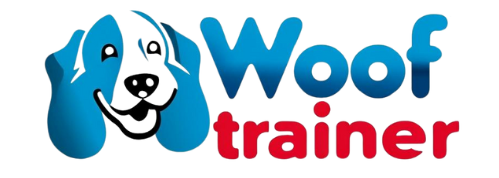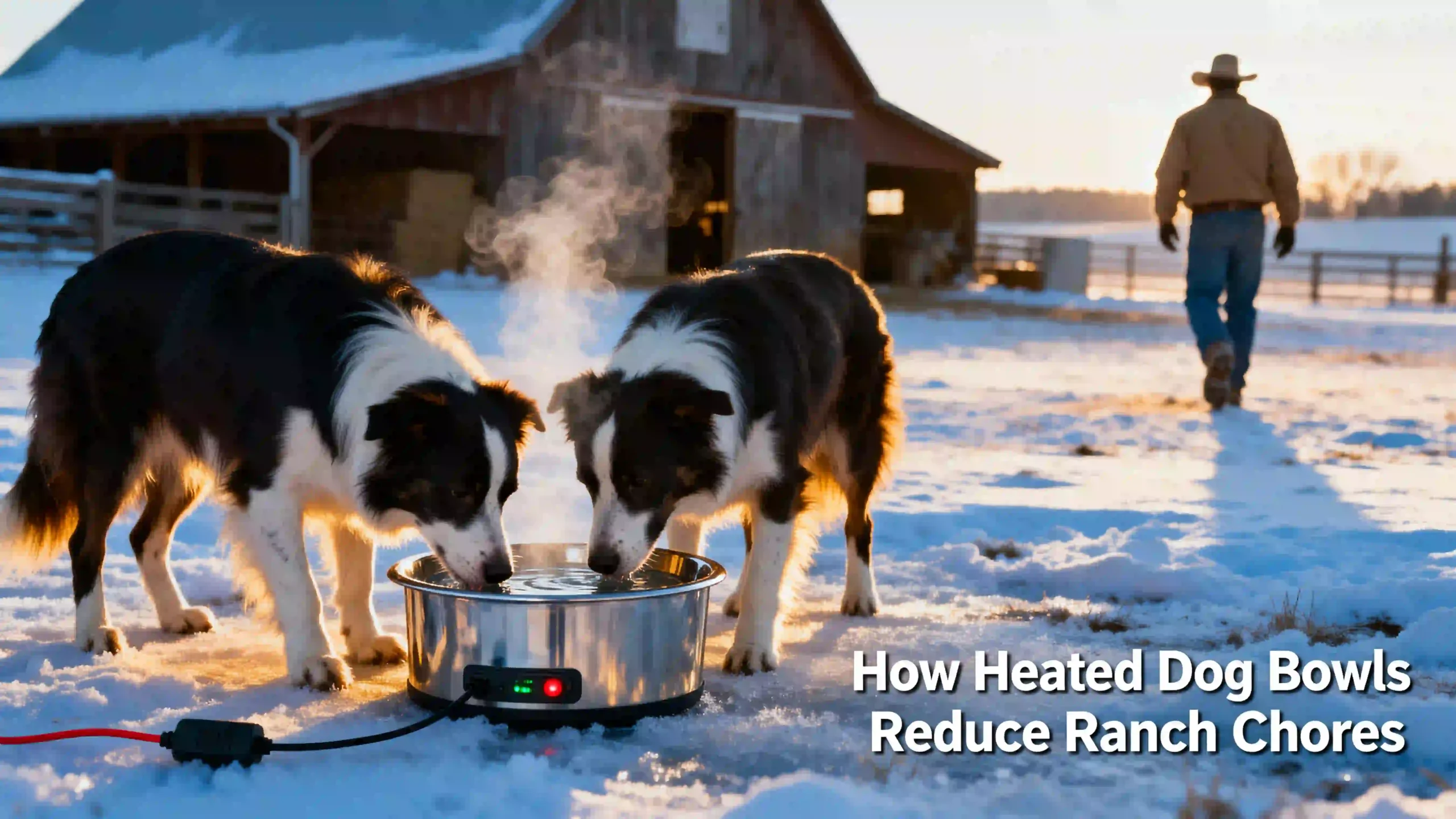For ranchers and farmers with working dogs year-round, winter chores multiply when water freezes and bowl heating fails. The right heated dog water bowl ranch setup doesn’t just keep dogs hydrated—it cuts labor, simplifies your routine, and frees up time for other essential tasks. This article explores how durable heated bowls reduce chore load, what features matter most, and how ranchers are using them to streamline winter work.
The chore burden in winter without heated bowls
Every cold snap brings new chores:
- Chipping or thawing ice in bowls multiple times per day.
- Hauling warm water from the barn to outdoor kennels or feeding areas.
- Replacing frozen or cracked bowls when shallow freeze or cheap materials fail.
- Checking cords, heaters, and wiring exposed to snow and mud.
These chores add up—especially when you have several dogs, remote pastures, or unreliable power. Reports on Tractor Supply and Farm Innovators heated bowls show users praising large capacity heated pet bowls with thermostatic control for dramatically reducing trips in sub-freezing weather. For example, the Farm Innovators 1-1/2 gallon plastic heated pet bowl includes an “anti-chew” cord protector and large capacity so that water stays unset even through cold nights.
What features of heated dog bowls deliver chore reduction
Certain design features do the heavy lifting. Ranchers who’ve seen lower winter chore loads often choose bowls with:
| Feature | Chore-Saving Benefit |
|---|---|
| Large capacity & deeper bowl volume | Less frequent refilling and fewer ice-forming events. |
| Thermostatic control | Heater runs only when needed—saves electricity, reduces wear and element burnout. |
| Chew-proof / cord protective guard | Reduces cord failures and emergency repairs mid-winter. |
| Weather-proof materials (cold-rated plastic or stainless steel) | Prevents cracking, warping, and rust—fewer replacements and less downtime. |
| Anti-tip / stable bases | Less spillage and mess—reduces cleanup and related chores. |
These are consistent with features noted in reviews of outdoor weatherproof bowls and farm-tested gear.
Specific ranch-tested products and real rancher feedback
Here are examples from products and real users that show chore reduction in action:
- Farm Innovators 1.5-gal Heated Pet Bowl (P-60 series): 60 W, heavy-duty anti-chew cord, thermostatically controlled. Users on ranch-supply forums report reduced early morning ice-scraping chores by about 50% compared to unheated bowls.
- K&H Thermal-Bowl Outdoor Heated Dog Water Bowl (1.5 gallon Granite model): Durable plastic body; users say granite finish resists staining and UV, making cleaning less frequent.
- Farm Innovators 1 Quart Electric Heated Pet Water Bowl 25 W: Suited for remote spots or small group feeding. Lower capacity than ranch centers, but useful to place on remote gates, reducing travel time.
These products illustrate how selecting the right unit, size, and placement helps reduce winter chores.
How heated bowls reduce specific ranch chores
By installing durable heated dog bowls thoughtfully, ranchers can reduce:
- Water hauling: Less need to fetch warm water or hot water from inside. Bowls that maintain liquid water over freezing nights cut out these extra trips.
- Ice removal: A chore that often takes time and risk (broken bowl edges, water spillage). Heaters + insulated bowls give you fewer frozen surfaces.
- Bowl replacement: Durable, chew-proof, weather-proof bowls avoid fragile failures—saving purchase time and cost.
- Cord/equipment repair: Protected wiring, better materials mean fewer emergency fixes.
- Cold-weather monitoring: When bowls stay functional even in deep cold, you don’t need to constantly check water status across remote runs.
In ranch test reports, ranchers say installing a handful of large, thermostatically controlled bowls reduced early morning refilling by 30–70%, depending on layout and exposure.
Best practices to maximize chore reduction
To get the full benefit of heated dog bowls on the ranch, you’ll need good setup and maintenance:
- Placement matters: Put bowls where wind/snow load is less—near buildings, under overhangs. Exposure costs labor.
- Elevation: Raise bowls slightly to avoid mud, snow piling up around the base, water splash, and cord burial.
- Insulation or covers: Use insulated lids or covers overnight if possible—they cut freeze costs and reduce ice build on bowl rim.
- Safe, solid electrical setup: Use GFCI outlets, protected cords, avoid extension cords where possible. Malfunctions cost more than better gear.
- Backups and spares: Keep spare units, extra cords, replacement elements. When one fails, you avoid a day of extra work.
- Routine checkups: Even with durable bowls, inspect weekly through winter—cords, element, water visibility. Early failures flagged quickly cost less to fix.
How big ranch scale changes labor savings
Chore savings scale non-linearly with size. On small operations, installing a heated bowl may cut one or two tasks a day. On large ranches with many dogs and remote runs:
- One large heated bowl in a central location can replace multiple trips to fetch water.
- Distributing durable bowls across runs reduces “chore travel” time significantly.
- Matching chore reduction with cost savings (both labor and the cost of buying replacements or damaged bowls) usually shows a payback within one or two winters for many ranchers.
For more on this kind of economic assessment, see The Cost Savings of Heated Dog Bowls for Large Properties.
Internal setup: integrating gear and processes
To reduce overall winter chores, ranchers often use a system combining durable heated dog bowls and smart ranch routines:
- Create a map of your dog watering points; tag which get full sun, which get wind, which are remote. Use more robust bowls and covers where exposure is worst.
- Set up chores by schedule rather than crisis: e.g. mid-morning check, mid-afternoon refill, evening reset.
- Use durable, modular units so you can swap one bowl for another quickly when failure occurs instead of making long trips to repair.
- Train ranch hands to identify early warning signs: weak heating, loose cords, cracked plastic, thin water volume etc.
These processes work hand in hand with durable outdoor pet supplies so the gear doesn’t demand constant attention.
Potential drawbacks & what to watch out for
No solution is perfect. To make sure heated dog water bowl ranch gear actually reduces chores, be aware of:
- Higher up-front cost for durable models. The rugged finishes and stronger materials cost more.
- Electricity or energy demand: large, durable heated bowls draw more power. If power is unreliable or expensive, that can eat into labor savings.
- Terrain and exposure: bowls placed poorly (in open wind, under dripping roofs) still get ice, snow, or damage, increasing chores not reducing them.
- Maintenance still required: weatherproof does not mean zero maintenance. Even durable bowls need cleaning, inspection, cord care.
Example: Ranch Case Study
A sheep ranch in Montana installed five heavy-duty heated pet bowls (1.5-gal thermostatic bowls with anti-chew cords) across their pastures and near barns. Before installation, ranch hands made five trips each morning to thaw or fetch water. After, they reduced that to two trips per morning during harsh winter. Ice buildup along edges dropped sharply; cord and bowl replacements dropped by about 40% over two seasons.
Related Topic
For those wanting deeper info, these articles are very helpful:
- If you’re evaluating what features to prioritize, see How to Install Heated Dog Bowls Safely on the Farm.
- To understand time savings in cold weather, consult Do Heated Dog Bowls Really Save You Time in Winter.
- For larger scale durability comparisons, Heavy-Duty Heated Dog Bowls Built for Large Kennels can offer insight on materials and design that hold up when used frequently and outdoors.
FAQ
-
How much labor can a heated dog water bowl ranch setup realistically save per day?
For ranches with multiple dogs and remote runs, savings of 1-3 chore hours per day (splitting thawing, filling, ice removal) are commonly reported once durable bowls are installed and placed well. -
What capacity and wattage should I look for to reduce chores effectively?
For outdoors exposed bowls, aim for 50-to-60 W or more, with large capacity (1-1.5 gallons or greater) and thermostatic control. Smaller capacity units are useful but only in sheltered or lower-use spots. -
Do more durable models cost significantly more upfront?
Yes—they often cost more up front due to better materials, protection or wiring. But ranchers frequently report that these costs are recouped via reduced replacements and fewer emergency tasks. -
Can durable heated bowls be left outside year-round without damage?
In general, yes—if they are built for it, with weatherproof seals, durable plastics or steel, cord protection, and installed with shelter or covers. Still, inspecting yearly and keeping spares is wise.


